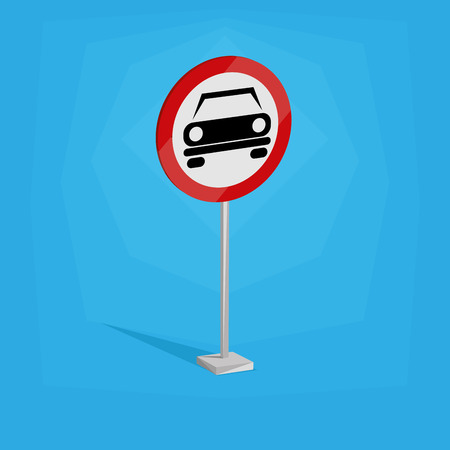1. Understanding Uninsured/Underinsured Motorist Coverage
When you’re driving in the U.S., not everyone on the road has enough car insurance—or sometimes, any at all. That’s where Uninsured and Underinsured Motorist coverage (commonly called UM/UIM) comes into play. This type of insurance is designed to protect you, your family, and your passengers if you’re involved in an accident with a driver who either has no insurance or not enough to cover the damages.
What Does UM/UIM Coverage Mean?
Uninsured Motorist (UM) Coverage: This kicks in if you’re hit by a driver who doesn’t carry liability insurance. If they’re at fault for the accident, their lack of coverage means you might be stuck paying for medical bills or repairs—unless you have UM.
Underinsured Motorist (UIM) Coverage: Sometimes, the other driver does have insurance, but it isn’t enough to cover all your expenses. UIM helps bridge that gap, so you aren’t left covering large out-of-pocket costs.
How Does It Work?
If you’re injured or your vehicle is damaged in an accident caused by another driver, and that person is uninsured or underinsured, you can file a claim with your own insurer through your UM/UIM coverage. Your insurance company will then step in to pay for costs like medical bills, lost wages, and even pain and suffering, depending on your policy limits.
Why Is UM/UIM Coverage Important?
While auto insurance is required in most states, millions of drivers either ignore this law or carry just the minimum required—which often isn’t enough for serious accidents. Here’s why having UM/UIM coverage matters:
| Situation | Your Protection with UM/UIM |
|---|---|
| You’re hit by an uninsured driver | Your UM coverage pays for your injuries and damages |
| The other driver’s insurance isn’t enough | Your UIM coverage fills in the gap up to your policy limits |
| You’re involved in a hit-and-run accident | In many states, UM also covers hit-and-runs when the at-fault driver can’t be identified |
Key Takeaways About UM/UIM Coverage
- It protects you financially if the at-fault driver can’t pay for your losses.
- It’s relatively affordable compared to the peace of mind it offers.
- It works alongside other types of auto insurance, offering an extra layer of security on American roads.
This kind of coverage is a smart move for anyone who wants to avoid unexpected expenses after an accident caused by someone else’s lack of proper insurance.
2. Why Is UM/UIM Coverage Essential in the U.S.?
The Reality of Uninsured and Underinsured Drivers
Many people are surprised to learn just how common it is for drivers on American roads to have little or no auto insurance. According to recent studies, about 1 in 8 drivers in the U.S. are uninsured. Even more carry only the minimum required coverage, which may not be enough to cover all damages in a serious accident. This means you could be left paying out of pocket if youre hit by someone who doesnt have enough insurance.
Uninsured vs. Underinsured: Whats the Difference?
| Type of Driver | Description | Risk to You |
|---|---|---|
| Uninsured Motorist | No insurance at all | You may get no help paying for injuries or damages |
| Underinsured Motorist | Has some insurance, but not enough to cover your losses | You could be stuck with bills that go beyond their policy limits |
The Financial Risks Without Proper Coverage
If you’re in an accident caused by an uninsured or underinsured driver, you could face expensive medical bills, car repairs, and lost wages—all without enough financial support from the at-fault driver’s insurance. Without Uninsured/Underinsured Motorist (UM/UIM) coverage, these costs can quickly add up and create a serious burden for you and your family.
Common Scenarios Where UM/UIM Coverage Matters
- Hit-and-Run Accidents: The other driver flees the scene and is never identified—leaving you without anyone to file a claim against.
- Drivers with Minimum Coverage: The at-fault driver’s policy pays out quickly, but doesn’t come close to covering your actual expenses.
- Bicyclists and Pedestrians: Even if you’re not in a car, you can still be protected if you’re struck by an uninsured driver while walking or biking.
This is why UM/UIM coverage is considered essential protection for every American driver—it steps in when others can’t or won’t pay, helping ensure that one accident doesn’t derail your financial stability.
![]()
3. Scenario 1: Hit by an Uninsured Driver
Imagine This Situation
Youre driving home from work one evening when another car runs a red light and crashes into your vehicle. After the shock wears off, you exchange information with the other driver—only to discover they dont have any car insurance. Suddenly, youre facing car repairs, medical bills, and maybe even time off work. What happens next?
How Uninsured Motorist (UM) Coverage Steps In
If you have Uninsured Motorist coverage as part of your auto policy, you’re protected in this exact scenario. Instead of getting stuck with the bills or needing to sue the other driver (who probably can’t afford to pay), your own insurance company helps cover your costs.
What Does UM Coverage Typically Pay For?
| Expense Type | How UM Coverage Helps |
|---|---|
| Vehicle Repairs/Replacement | Pays for fixing or replacing your car if the uninsured driver was at fault. |
| Medical Bills | Covers hospital visits, doctor bills, and related medical expenses for you and your passengers. |
| Lost Wages | Reimburses you for income lost while recovering from accident injuries. |
| Pain & Suffering | May provide compensation for emotional distress or long-term effects. |
A Closer Look: Step-by-Step Example
- You file a claim with your own insurance under your UM coverage.
- Your insurer investigates and confirms the other driver was uninsured and at fault.
- Your insurance pays for approved repairs, medical costs, and more—up to your policy limits.
- You get back on the road without a huge financial burden.
Why This Matters in the U.S.
Many states require drivers to carry insurance, but not everyone follows the law. According to the Insurance Research Council, about 1 in 8 drivers in the U.S. is uninsured. With UM coverage, you have peace of mind knowing you’re not left holding the bag if you get hit by one of them.
4. Scenario 2: Injured by an Underinsured Driver
Imagine you’re driving home after work when another car runs a red light and crashes into you. You end up with a broken arm, whiplash, and your car is badly damaged. The other driver does have auto insurance, but when you file a claim, you find out their liability limits are way too low to cover all your medical bills and repair costs. This is more common than most people think—many drivers only carry the minimum coverage required by state law, which often isn’t enough for serious accidents.
How Underinsured Motorist (UIM) Coverage Helps
This is where your underinsured motorist (UIM) coverage comes in handy. If the at-fault driver’s insurance can’t pay for everything, your own UIM coverage helps make up the difference so you aren’t left paying out of pocket.
Real-Life Example
Let’s break it down with some simple numbers:
| Damage Type | Total Cost | At-Fault Driver’s Insurance Pays | Your UIM Coverage Pays | Your Out-of-Pocket Cost |
|---|---|---|---|---|
| Medical Bills | $40,000 | $25,000 (their limit) | $15,000 (your UIM covers the gap) | $0* |
| Car Repairs | $15,000 | $10,000 (their limit) | $5,000 (your UIM covers the gap) | $0* |
*Assumes your UIM policy limits are high enough to cover the remaining costs.
Why UIM Coverage Matters
Without underinsured motorist coverage, you’d be stuck paying whatever the other driver’s insurance doesn’t cover—even if the accident wasn’t your fault. UIM coverage gives you peace of mind that you’ll be protected financially, no matter how much insurance the other driver has.
5. Protecting Yourself: Choosing and Using UM/UIM Coverage
Guidance on Selecting the Right UM/UIM Policy Limits
When it comes to Uninsured/Underinsured Motorist (UM/UIM) coverage, choosing the right policy limits is key to protecting yourself and your loved ones on the road. Here’s a simple guide to help you decide:
| Coverage Limit | What It Means | Who Should Consider It? |
|---|---|---|
| Minimum State Requirement | The lowest amount required by law in your state. | Bare minimum protection; not recommended if you have assets or family to protect. |
| $50,000 / $100,000 | Pays up to $50,000 per person and $100,000 per accident. | Good for single drivers or couples with moderate needs. |
| $100,000 / $300,000 (or more) | Pays up to $100,000 per person and $300,000 per accident. | Recommended for families, homeowners, or those with higher income/assets. |
Understanding the Claim Process for UM/UIM Coverage
If youre ever involved in an accident with an uninsured or underinsured driver, knowing how to handle your claim can make all the difference. Here’s what usually happens:
- Report the Accident: Notify your insurance company as soon as possible. Provide details about the other driver and any police reports.
- Documentation: Collect evidence such as photos of the scene, medical records, repair bills, and witness statements.
- File Your Claim: Submit all documents through your insurer’s claims process—either online or via their claims department.
- Investigation: The insurance company will review your claim and may ask for additional information or statements.
- Payout: Once approved, your insurer will pay out according to your policy limits for medical expenses, lost wages, or property damage.
Tips from U.S. Insurance Experts for Maximizing Your Protection
- Match Your Liability Limits: Many experts recommend setting your UM/UIM limits at least equal to your liability coverage.
- Avoid Minimums: The state minimum is often not enough to cover real-life accident costs—aim higher if you can afford it.
- Add Stacking (Where Available): Some states let you “stack” coverage across multiple vehicles for extra protection.
- Review Annually: Life changes—review your policy every year or after major life events (like marriage or buying a home).
- Ask About Add-Ons: Consider adding Medical Payments Coverage (MedPay) or Personal Injury Protection (PIP) if available in your state.
Your Next Steps: Getting the Most from UM/UIM Coverage
The right UM/UIM coverage keeps you protected from unexpected costs when other drivers fall short. Take time to compare policies, understand what’s included in your state, and work with a trusted insurance agent who can answer questions specific to where you live. Remember—the best protection is proactive!

